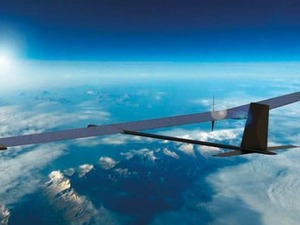Innovative Projects are Entering the Market for Unmanned Aircraft System

In the next 10–20 years, due to the development of technology, the use of unmanned aircraft systems (UAS), integrated solutions and services based on them will significantly expand. Estimates of experts show that the volume of the global UAS market, integrated solutions and services by 2035 will be more than $200 billion (at current prices). Not only the structure of the market will change, but also the demands of consumers, under which new leaders in global competition will have to adapt.
Russia's share in this emerging market may amount to more than $35–40 billion. Large Russian companies will emerge and set industry standards in their segments.
“Unmanned aerial vehicles are a promising direction for the development of aviation technology, which has a wide range of applications in both military and civilian areas. They can perform both those functions that were assigned to traditional aviation, and the functions of other non-aviation systems,” - said Sergey Korotkov, General Designer and Vice President for Innovations of the United Aircraft Corporation, speaking in the State Duma.
According to Sergey Korotkov, “the emergence of drones puts us on the threshold of revolutionary transformations in aviation.”
On the Energy of the Sun
New technologies, used in the creation of drones, can give them a completely unique characteristics. An example is the joint project of the JSC Irkut Corporation and Moscow Aviation Institute. Within its framework, an experimental drone is being developed for long flights using solar energy.
“So far this is a demonstrator of the possibility of aircraft creation, which should fly for a long time in an unmanned mode. Its weight is up to 25 kg and the wingspan is more than 5 m,” - said Alexander Efremov, Dean of the Faculty № 1 “Aircraft Engineering”of MAI. “So far, we have done together with the Central Aerohydrodynamic Institute such a demonstrator who flies without solar batteries.”
The first prototype of the drone in the summer of 2018 has already successfully completed several test flights. During these flight tests, the minimum and maximum speeds at which the unmanned aerial vehicle can fly are determined, as well as the stability and controllability characteristics are checked.
As the Dean noted, after checking all algorithms laid down in the control system, flight tests will be continued both in manual and automatic mode. The second experimental sample is intended for further flight tests. “This is already a device with a larger wing area and its weight is up to 30 kg,” - said Alexander Efremov. – “Solar panels are glued on the surface. The power supply of all systems and the engine is carried out not from an autonomous battery, but from solar batteries.”
Such drones, capable of flying without landing for several days, can be used as communication repeaters, as well as for monitoring the earth's surface.